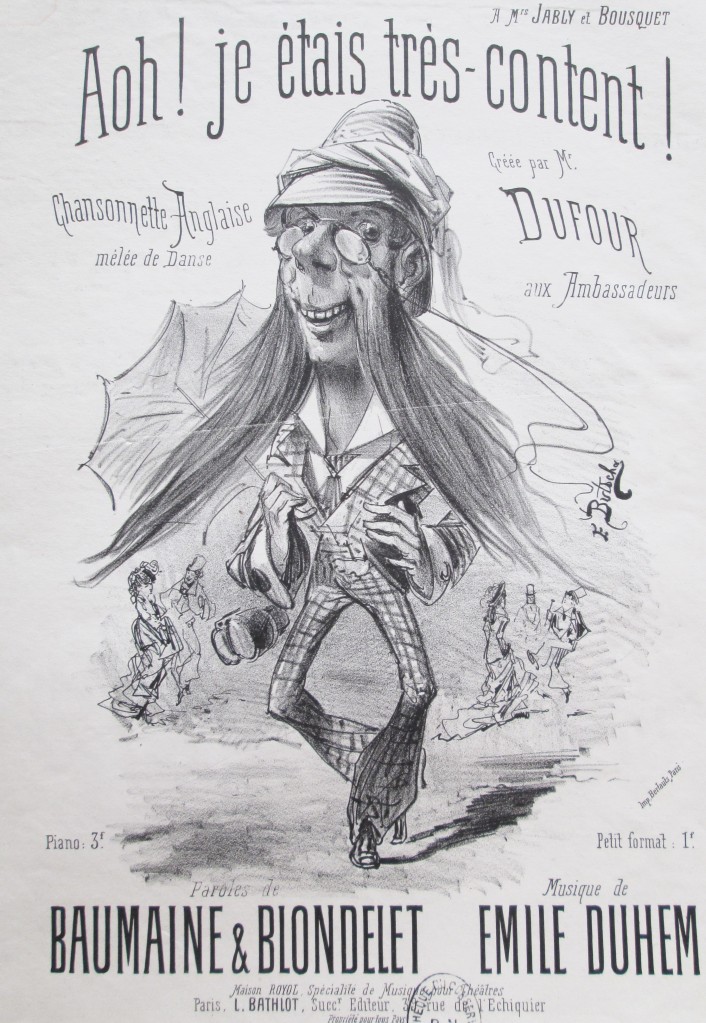Singing the English
Comic Songs about the English from the French café-concert

In the nineteenth-century, relations across the Channel between France and England vacillated wildly from mutual love and admiration to bitter rivalry. Projects for an under-sea tunnel tried to get off the ground. World Fairs attracted thousands of visitors to visit the capital cities. Artistic and literary inspiration flowed across the Channel. Exiles sought sanctuary in Paris and London. Yet at the same time, revolutions, revolts, wars, and colonial ambition sparked mutual antagonism and tempers were quick to cry violence on both sides.
Into this atmosphere, French café-concert audiences delighted in comic songs about the English – complete with massive fake ginger hair, excessive tweed, outrageously awful accents, and truly terrible dancing. Indeed, they loved these songs so much that nearly a hundred comic songs about the English were written in just 35 years from 1870-1904. It’s hard to imagine one single theme striking us as so funny in our pop culture today that three songs a year, every year, could have come out since 1987 and they would still have had us laughing in the aisles.
I explore this musical tradition in depth in my recent book Singing the English: Britain in the French Musical Lowbrow 1870-1904 (Routledge, 2022), and this body of music is an amazing treasure-trove of ways in which French society grappled with the uncertainties of life in the Belle Epoque and provided a means of understanding and questioning both the Franco-British relationship and French identity itself.
This website aims to make available transcriptions of these long-forgotten but hugely entertaining and fascinating songs. I hope these songs will spark interesting discussions and I’d be delighted to hear from fellow enthusiasts to talk about – or to work on – these more (contact me using the form below).
Note: all music transcribed here is in the public domain. Cover images are sourced from the music archives of the Bibliothèque nationale de France and are reproduced here under their terms for free academic use.
This research was generously funded by the British Academy.